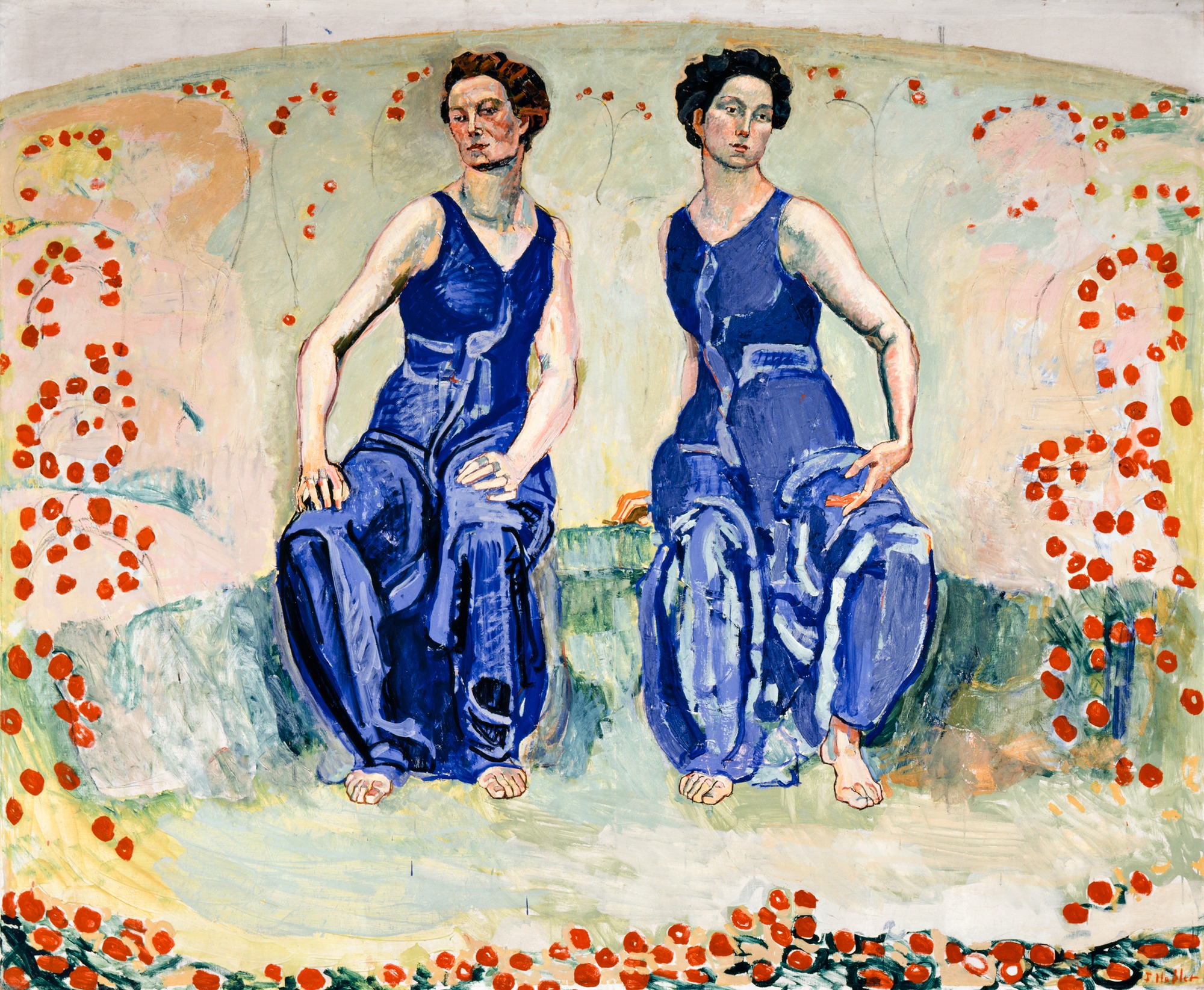The Swiss artist Ferdinand Hodler is known for enigmatic works in which he explored themes such as the universality of the human experience and the inherent, but inexplicable order of the natural world. His early works were portraits, landscapes, and genre paintings in a realistic style. Later, he adopted a personal form of symbolism called Parallelism that emphasized the symmetry and rhythm which Hodler believed to form the basis of human society. Parallelism is more than a principle of formal composition, it is a moral and philosophical idea, relying on the premise that nature has an order, based on repetition, and that in the end all men resemble each other.
Hodler's symbolist images went beyond the purely decorative and sensuous aspects of Art Nouveau. There are several versions of "The Sacred Hour". Here, two women—painted from the same model and dressed identically in eurythmic dance costumes—sit in an artificial landscape, their mannered poses mirror images of each other. The repetitive patterns, symbolizing the mystical order that underlies all of nature—the basis of Parallelism are clearly visible in this painting.


 Ferdinand Hodler
Ferdinand Hodler